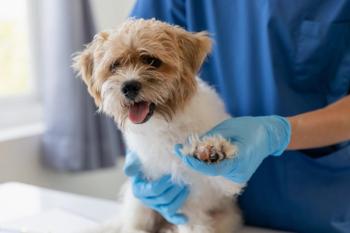
Federal guidelines issued for genetically engineered animals
Washington -- The U.S. Food and Drug Administration has issued its final guidance on regulating genetically engineered animals.
Washington
-- The U.S. Food and Drug Administration has issued its final guidance on regulating genetically engineered animals.
FDA defines "genetically engineered animals "as those animals modified by recombinant DNA (rDNA) techniques."
After a 60-day comment period on genetically engineered animals, the FDA received nearly 29,000 comments.
About 60 letters were considered to be substantive because they provided detailed analyses, recommendations, or opinions from consumers, academics, animal advocacy groups, trade and professional associations, consumer and environmental groups, foreign governments, other federal and state government agencies, developers of GE animals, meat producers and purveyors, and pharmaceutical companies, according to the FDA. The majority of the remaining comments opposed the genetic engineering of animals, which wasn't the purpose of the comment period.
The purpose of the guidance is to describe how the Federal Food, Drug and Cosmetic Act's new animal drug provisions and FDA's implementing regulations apply to genetically engineered animals.
GE animals currently being developed can be divided into six broad classes based on the intended purpose of the genetic modification: to enhance food quality or agronomic traits (such as pigs with less environmentally deleterious wastes, faster growing fish); to improve animal health (such as disease resistance); to produce products intended for human therapeutic use (such as pharmaceutical products or tissues for transplantation; these GE animals are sometimes referred to as "biopharm" animals); to enrich or enhance the animals' interactions with humans (such as hypo-allergenic pets); to develop animal models for human diseases (such as pigs as models for cardiovascular diseases); and to produce industrial or consumer products (such as fibers for multiple uses).
Around since the 1980s, genetic engineering already is widely used in agriculture to make crops like corn and soy resistant to pests or herbicides. In medicine, genetic engineering is used to develop microbes that can produce pharmaceuticals. In food processing, genetic engineering is used to produce microorganisms that more efficiently aid in baking, brewing and cheese-making.
The guidance, titled "The Regulation of Genetically Engineered Animals Containing Heritable rDNA Constructs," clarifies the FDA's statutory and regulatory authority and provides recommendations to producers of genetically engineered animals.
"At this time, it is our intent to hold public scientific advisory committee meetings prior to making decisions on GE animal-related applications," says Bernadette Dunham, DVM, Ph.D, director of the FDA Center for Veterinary Medicine.
The FFDCA defines "articles (other than food) intended to affect the structure or any function of the body of man or other animals" as drugs. An rDNA construct that is in a genetically engineered animal and is intended to affect the animal's structure or function meets the definition of an animal drug, whether the animal is intended for food, or used to produce another substance. Developers of these animals must demonstrate that the construct and any new products expressed from the inserted construct are safe for the health of the genetically engineered animal and, if they are food animals, for food consumption.
The guidance also describes the manufacturer's responsibility in meeting the requirements for environmental review under the National Environmental Policy Act.
For more information,
Newsletter
From exam room tips to practice management insights, get trusted veterinary news delivered straight to your inbox—subscribe to dvm360.




